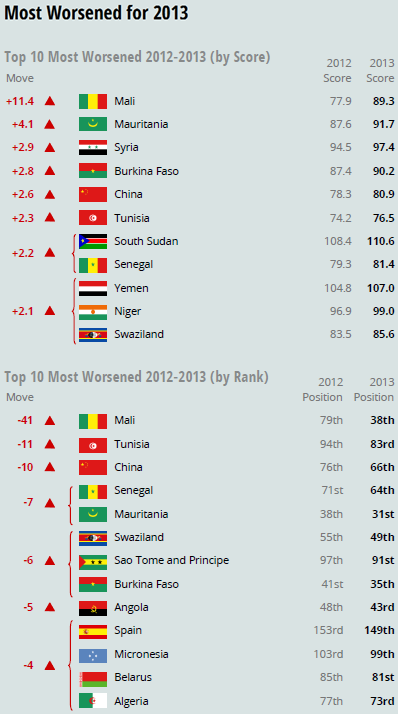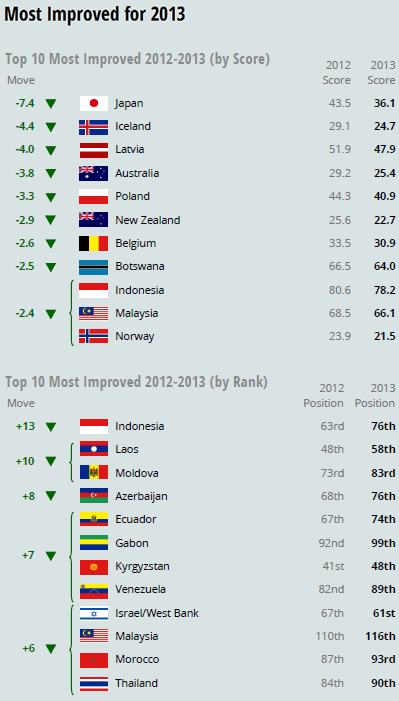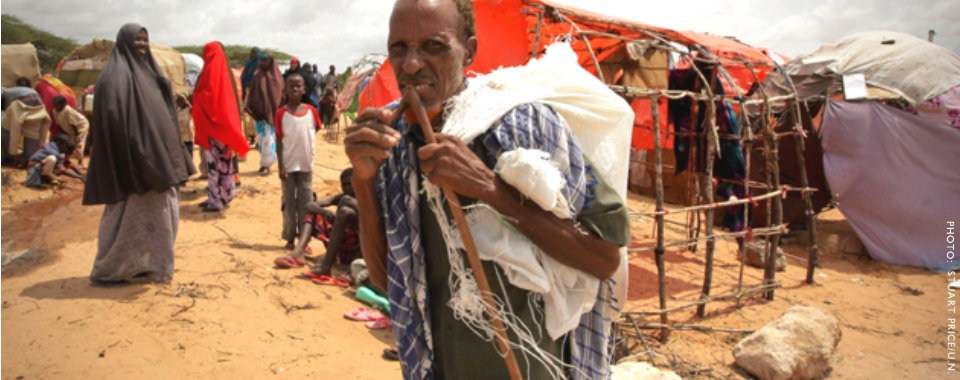BY J.J. MESSNER
In compiling the 2013 Failed States Index (FSI), there was some optimism at The Fund for Peace that we would finally see Somalia climb out of first place on the Index after having been firmly anchored in top position for five straight years, especially given the encouraging signs that have been emanating from the country in recent times. It was not to be. Somalia has, for the sixth time in succession, taken top spot in the FSI.
The case of Somalia demonstrates an important facet of recovery from conflict and development. The Fund for Peace’s Nate Haken has noted the political metaphor implicit in the nursery rhyme, Humpty Dumpty, as illustrative of the long- and short-term performance of countries on the FSI: Humpty Dumpty – a fragile egg-based character – had a great fall, leading to a rapid loss of structural integrity – or, in technical parlance, a splattering. Subsequently, despite the best efforts of all the King’s horses and all the King’s men, they were unable to put Humpty back together again.
The Humpty Dumpty principle thus follows that when countries fall significantly, they can do so rapidly and catastrophically and it takes significant resources to reconstruct them. Though it is true that countries can also experience slow declines (as we’ve seen with multiple European countries), there is really only one speed of recovery – slow. Further, such recovery takes significant effort from all manner of actors.
 There has been, however, some progress in Somalia – a new government has been sworn in and the blight of piracy off its coast has been somewhat subdued. There are signs that commerce is recovering, albeit localized mainly in Mogadishu. There are other hopeful signs as well, reflected in the fact that Somalia was one of only two countries in the Top 10 to see their scores improve this year. As with any country in Somalia’s position, it will be important for the international community to be realistic with its expectations. Yes, Somalia is number one for the sixth year in a row, but for a country facing the pressures and challenges that Somalia has since 1991, the road to recovery is inevitably a long one.
There has been, however, some progress in Somalia – a new government has been sworn in and the blight of piracy off its coast has been somewhat subdued. There are signs that commerce is recovering, albeit localized mainly in Mogadishu. There are other hopeful signs as well, reflected in the fact that Somalia was one of only two countries in the Top 10 to see their scores improve this year. As with any country in Somalia’s position, it will be important for the international community to be realistic with its expectations. Yes, Somalia is number one for the sixth year in a row, but for a country facing the pressures and challenges that Somalia has since 1991, the road to recovery is inevitably a long one.
Similarly, Myanmar has been feted for its entry into the global community, with the installation of Aung San Suu-Kyi to Parliament, some promising democratic reforms, an opening up to the world economy, and even a six-hour visit from President Obama. Certainly, the advances in Myanmar are encouraging, but no country is capable of turning its fortunes on a dime. As Myanmar has opened up, it is at the same time experiencing massive internal ethnic turmoil, and it is far from guaranteed that the political reforms will be permanent. The FSI demonstrates that Myanmar is trending in the right direction – indeed, it has improved nearly six points in four years – but real, sustained change will take time.
Another country that will require international patience by the boat-load is South Sudan. [See also our coverage on South Sudan.] There was much rejoicing at the birth of the world’s newest country in 2011. As it turns out, independence was not a panacea. Violence continues, sometimes perpetrated by those in state uniforms, sometimes along ethnic lines. As much as statehood was a herculean effort, in many ways the real struggle begins now. South Sudan provisionally entered the FSI as the 4th most fragile state in 2012 and has officially ranked there in 2013 as well, albeit with a significantly worsened score.
Two countries that illustrate how slow and steady success in state building really is are Sierra Leone and Timor-Leste. In the first Failed States Index, in 2005, Sierra Leone was ranked 6th. In 2013, Sierra Leone has climbed down to 33rd, having improved over ten points in eight years. Similarly, Timor-Leste, whose UN mission closed in 2012, has also slowly made its way down the FSI, improving from 20th in 2007 to 32nd this year and having advanced nearly seven points in only three years. Both have in common a slow and steady trend of improvement. During the late 1990s, both countries experienced at times vicious conflict. And now, a decade and a half later, both countries are on the verge of departing our “Alert” category and entering our less worrisome “Warning” designation. Neither has been a smooth trajectory, with bumps along the way and periodic returns to violence, especially in Timor-Leste.
 On the topic of recovery, the most-improved nation for the 2013 FSI is Japan. After the pummeling it received in 2012 from the effects of the previous year’s earthquake and nuclear meltdown, Japan has rebounded significantly in 2013, though it still has some way to go to return to its pre-earthquake standing. Though it is true that recovery is slow, Japan demonstrates that it is possible for highly resilient countries with legitimate, representative, and professional institutions to recover fairly rapidly from serious shocks. The next most improved country, Iceland, has similarly demonstrated a high level of resiliency, recovering from the economic shocks of previous years.
On the topic of recovery, the most-improved nation for the 2013 FSI is Japan. After the pummeling it received in 2012 from the effects of the previous year’s earthquake and nuclear meltdown, Japan has rebounded significantly in 2013, though it still has some way to go to return to its pre-earthquake standing. Though it is true that recovery is slow, Japan demonstrates that it is possible for highly resilient countries with legitimate, representative, and professional institutions to recover fairly rapidly from serious shocks. The next most improved country, Iceland, has similarly demonstrated a high level of resiliency, recovering from the economic shocks of previous years.
Similarly, countries with relatively high capacity can soften shocks that would otherwise send a state into a tailspin. As the economic crisis continues in much of Europe – with Greece, Cyprus, Spain and Portugal in particular experiencing continued economic suffering – it is perhaps interesting that none of these countries’ scores changed significantly in 2013.
Instability courses from country to country in waves taking on different forms depending on the sociopolitical context and the response of leadership. What happened last year in Tunisia affected Libya and Syria, which this year affected Mali and Mauritania. States are not isolated from the wider international and transnational context. Mali is by far-and-away the most-worsened country in the 2013 FSI, having worsened by 11.4 points and shot up 41 places to 38th on the Index, as a result of the conflict in the north of the country. Neighboring Mauritania is 2013’s second-most worsened country. Syria is again the third-most worsened country, having worsened by a cumulative 11.5 points between 2011 and 2013 as the civil war continues to rage.
Comparing the FSI from year to year can provide useful validation of things we already suspected to be true. Somalia being the country most at risk of state failure; Mali and Syria worsening significantly due to conflict; Japan rebounding from natural disaster. None of this is news to anyone, nor does it take the FSI to tell us these things.
What the FSI does do is demonstrate long-term patterns and trends, allowing us to possibly formulate new theories (or provide validation to existing ones) about conflict risk and lessons for peace building. At a national level, we are able to chart the progress of countries recovering from conflict, like Sierra Leone and Timor-Leste. We are able to chart the gradual worsening that led to phenomena such as the Arab Spring. [See our coverage on the Arab Spring.] Such observations can help us understand patterns of political, social and economic upheaval, hopefully improving our abilities in early warning and charting successful development.
